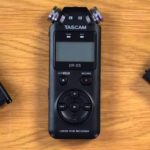It’s finally happened – you show up at the gig and you forgot a USB cable for your DJ controller. Or maybe someone spilled a drink on your gear and the jogwheels suddenly stop working. Perhaps you had a “mental gap” and just totally forgot to take along your DJ controller. Whatever the reason, knowing how to spin with just your laptop keyboard is a handy skill to have for when the show simply must go on (as it always does)…
5 Laptop DJing Tips
1. Know your software’s standalone capabilities
Not all laptop DJ software have the ability to be used as a fully functioning DJ app without a DJ controller or audio interface connected. Serato DJ, for instance, needs compatible hardware in order for it to be used for DJing. Furthermore, some software are more customisable than others: Virtual DJ 8 and djay Pro 2, for instance, have deep keyboard shortcut customisation features. Virtual DJ 8 even lets you create your own scripts and make tweaks to the engine code.
From the get-go, learn the extent that your chosen DJ software is capable of operating: can it be used fully without any other hardware like Traktor or Virtual DJ, or does it need to be “unlocked” by compatible hardware like Serato DJ? If it’s the latter, consider packing a backup DJ controller or use an audio interface for gigs – the Denon DJ DS1 for Serato DJ is a good example.
2. Use the 80/20 rule with keyboard shortcuts
You don’t need to go very deep and memorise every keyboard shortcut in order to use the software – you can get by and DJ a ton of gigs with just the basics. In economics this is known as the 80/20 Rule, or the Pareto Principle – 20% of your efforts get you 80% of the results. In our scenario, this means that 20% of the key commands get you 80% of the functions you need to perform.
Learn the key commands for transport controls (play, cue, stop), find out how to toggle effects on and off, how to do full-kills on EQs, how to access hot cues, and so on. Basically, think of all the functions you use the most when you DJ on a controller, and then try to look for the keyboard shortcuts in your DJ software.
3. Pack emergency accessories in your DJ bag
A splitter cable is crucial if you want to be able to preview and cue tracks. Splitter cables let you listen to your next track in your headphones without it playing on the main speakers. If you don’t need headphone cueing (say you’re just playing back tracks for a function), an 1/8″ to RCA cable will do. You’ll also want to try packing a small wireless mouse for more flexibility and if you prefer not to have your hands cramped up on the keyboard and trackpad.
You can also consider picking up a keyboard cover such as the one featured at the beginning of this article, which is a rubber overlay that shows you the default commands of your chosen DJ software. This is made by a third-party company like Keyboard Covers, who sell covers for different DJ apps as well as DAWs.
4. Sort your music and organise playlists ahead of time
When DJing with a controller and a laptop, you’ve got two “input devices” with two very distinct tasks: your DJ controller is used for spinning tasks like playing a tune, triggering FX, and working with faders, while your laptop keyboard is used for searching for tracks.
Since you’re spinning and searching using the same input device (ie your laptop keyboard), you’ll want to be especially organised with your music so you don’t waste time going through your cluttered hard drive for tunes. Keep your playlists up to date and your DJ library sorted so your keystrokes / keyboard time is spent interacting with the music you’re playing instead of searching the dark recesses of your hard drive.
5. Explore making your own mappings
Once you’ve mastered and got the basics down to habit, you can explore secondary keyboard shortcuts as well as your own custom keyboard mappings, which let you do some powerful things. In Virtual DJ 8, for example, it’s possible to cut and scratch with the keyboard using just a few custom key commands.
You can also access more advanced features like samplers and performance pad features by making your own custom mappings – the trick is to have them easily accessible in your keyboard or via a Shift layer. Again, consult your software’s manual to learn where to find them.
Finally…
While it’s possible to DJ with just your laptop and some DJ software as shown in this piece, it’s just a lot more intuitive and fun to spin on an actual DJ controller. Still, it doesn’t hurt to know how to mix using just your laptop’s keyboard and trackpad for those gear emergencies.
Any other laptop DJing tips you’d like to share with our audience? Do so below…








